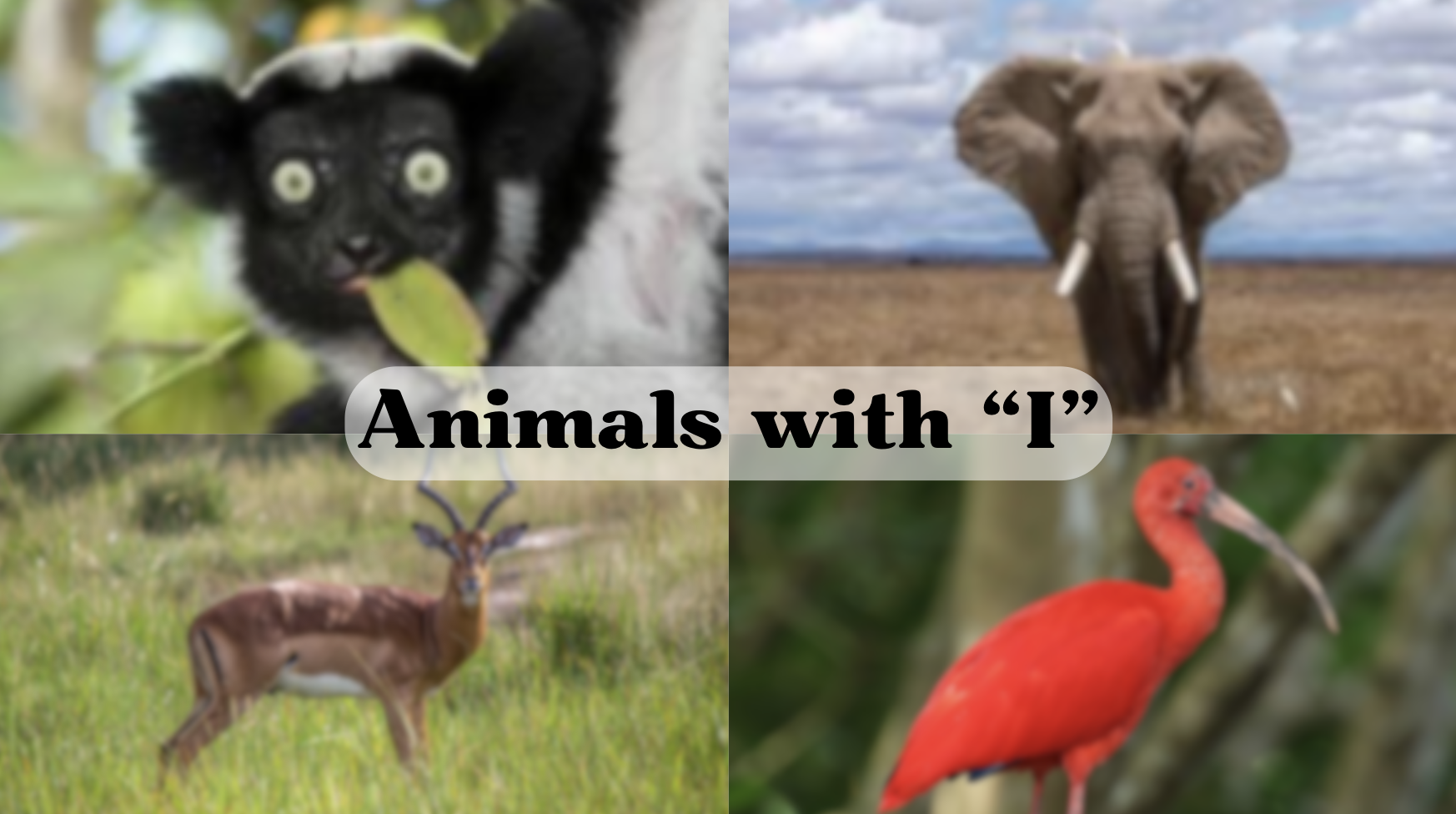
Hey there, animal lovers! Remember playing that alphabet game as a kid? “A is for alligator, B is for bear…” But when you got to I, you probably said “iguana” and moved on.
Truth is, there’s a whole world of incredible I-creatures out there that don’t get enough love.
Take the Irish elk – despite its name, it wasn’t exclusively Irish and wasn’t even a true elk! Or the imperial eagle, whose wingspan can reach an impressive 7 feet as it soars through Eurasian skies.
And let’s not forget about the itty-bitty iridescent shark that, surprise, surprise, isn’t actually a shark at all!
From ice-dwelling isopods to ink-squirting cuttlefish (yes, they start with I in some classifications!).
So stick around and get ready to be I-mpressed! After all, I animals might be rare in the dictionary, but they’re certainly not I-rrelevant in nature’s grand story.
Common Animals Starting with the Alphabet “I”
1. Ibex
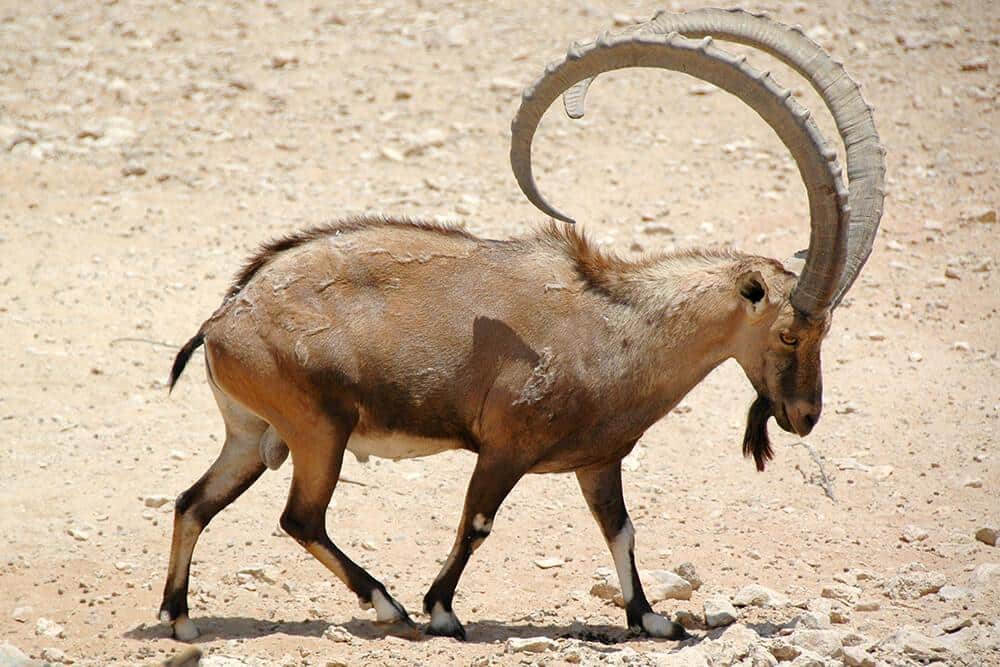
The ibex is a species of wild goat found in the mountainous regions of Europe, Asia, and North Africa. Known for their impressive climbing abilities, these animals are well adapted to rocky terrains and steep cliffs.
- Region of habitat: Europe, Asia, and North Africa
- Scientific name: Capra ibex
- Feeding habits: Herbivores, primarily feeding on grasses, shrubs, and lichens.
- What sound they make: Ibex make grunting and bleating sounds.
Fun Fact
Ibexes can climb almost vertical cliffs to avoid predators and find food, making them among the most agile mountain animals.
2. Ibis
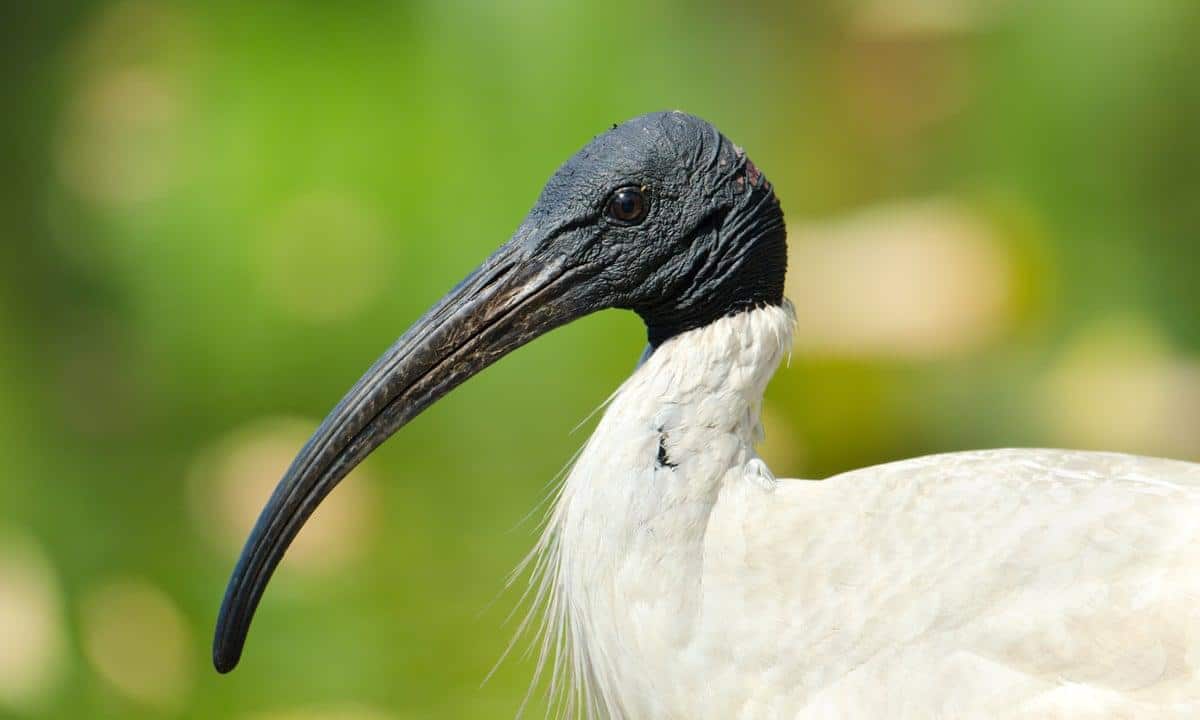
An ibis is a wading bird characterized by its long, curved bill and long legs. They are commonly found in wetlands, marshes, and coastal habitats around the world.
- Region of habitat: Wetlands, marshes, and coastal regions worldwide
- Scientific name: Threskiornithidae
- Feeding habits: Primarily feed on small fish, insects, and amphibians found in the mud.
- What sound they make: Ibises make high-pitched, sharp calls.
Fun fact
The ibis is considered sacred in ancient egyptian culture and was associated with the god thoth, the god of wisdom and writing.
3. Iguana
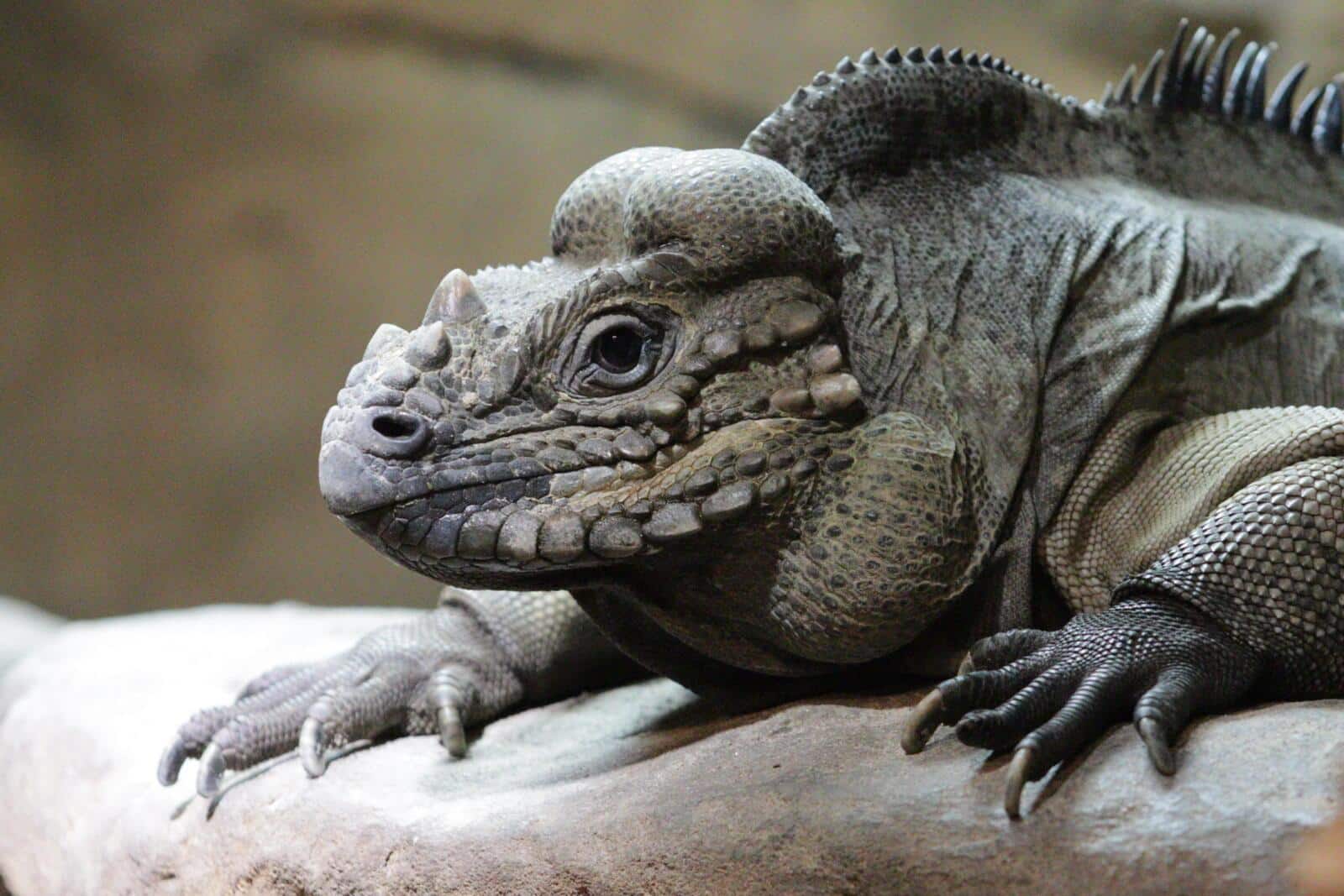
Iguanas are large, herbivorous lizards found in Central and South America as well as the Caribbean. They are known for their spiny crests along their backs and long tails.
- Region of habitat: Central and South America, the Caribbean
- Scientific name: Iguana iguana
- Feeding habits: Herbivores, feeding on leaves, fruits, and flowers.
- What sound they make: Iguanas are generally quiet but can hiss when threatened.
Fun fact
Iguanas can swim and are known to dive from trees into water to escape predators.
4. Impala
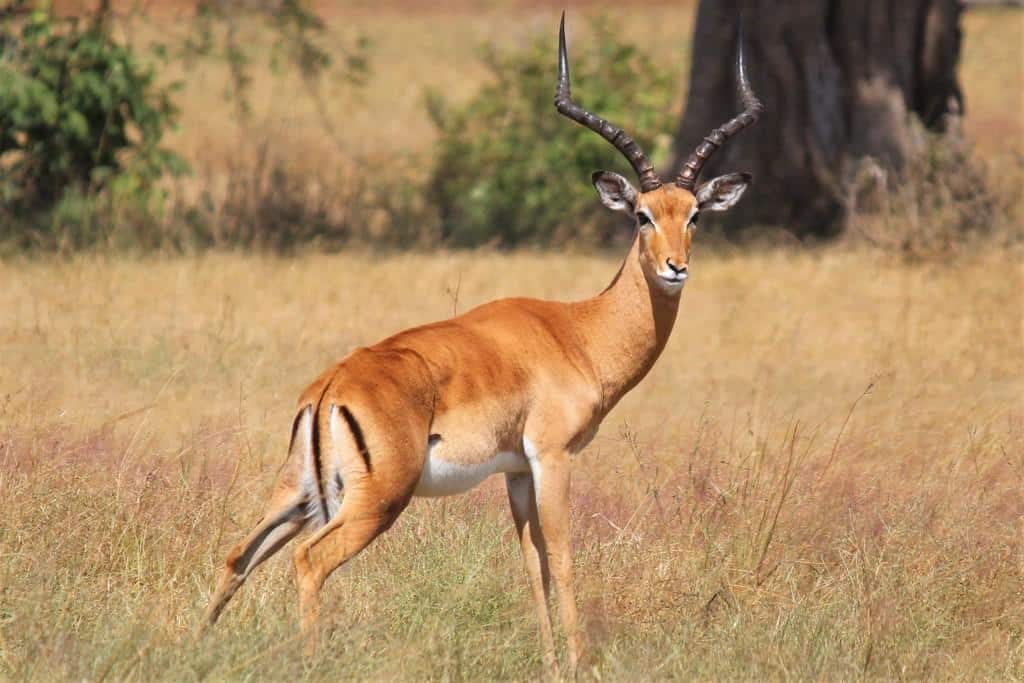
The impala is a medium-sized antelope native to eastern and southern Africa. Known for their graceful, agile movements, they are commonly found in savannas and woodlands.
- Region of habitat: Eastern and Southern Africa
- Scientific name: Aepyceros melampus
- Feeding habits: Herbivores, grazing on grasses and shrubs.
- What sound they make: Impalas make a soft bleating sound and loud snorts when alarmed.
Fun fact
Impalas are known for their impressive leaps, often clearing up to 3 meters in height when escaping predators.
5. Indian Cobra
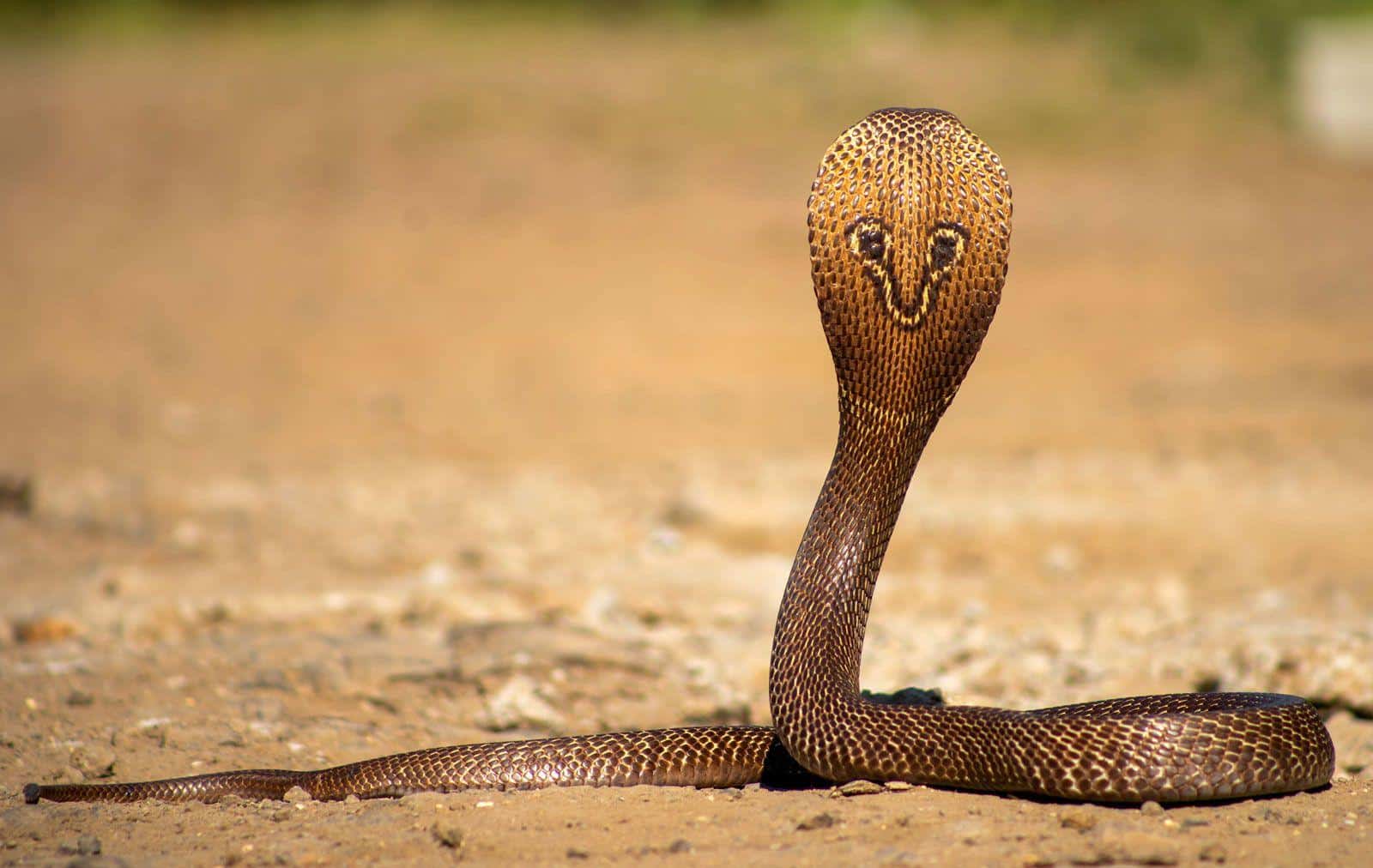
The Indian cobra is a venomous snake found in the Indian subcontinent. Famous for its hood, it is revered and feared in many cultures.
- Region of habitat: Indian subcontinent
- Scientific name: Naja naja
- Feeding habits: Carnivores, preying on small mammals, birds, and amphibians.
- What sound they make: Indian cobras hiss loudly as a warning.
Fun fact
Indian cobras are often associated with snake charmers and are an important symbol in Hindu mythology, representing Lord Shiva.
6. Indian Elephant
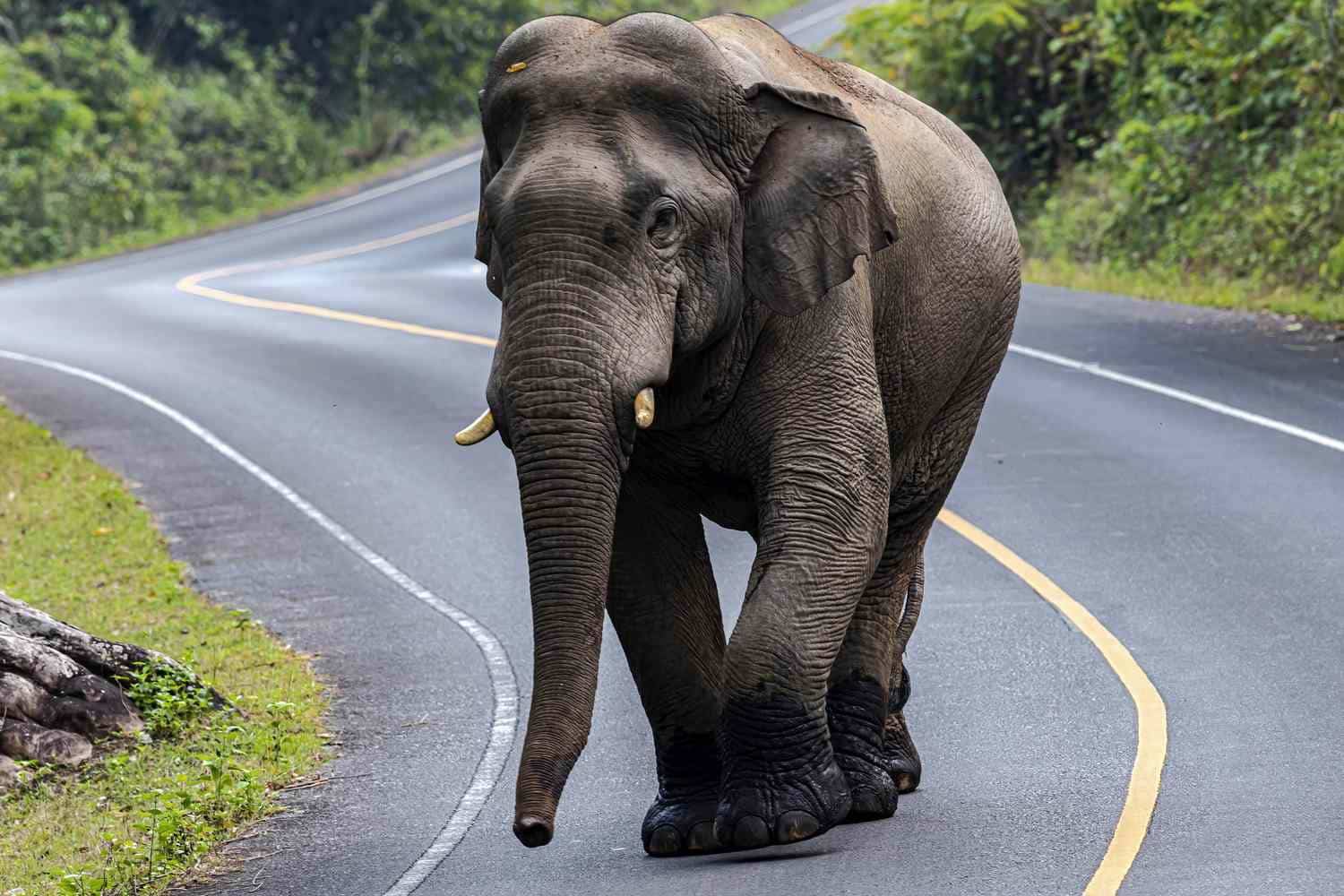
The Indian elephant is a subspecies of the Asian elephant found mainly in India and Southeast Asia. It is slightly smaller than its African relatives and is often seen in forests and grasslands.
- Region of habitat: India, Southeast Asia
- Scientific name: Elephas maximus indicus
- Feeding habits: Herbivores, feeding on grasses, fruits, and bark.
- What sound they make: Indian elephants make trumpeting sounds and rumbling noises.
Fun fact
Indian elephants are known for their intelligence and are often used in cultural and religious ceremonies.
7. Indian Rhinoceros
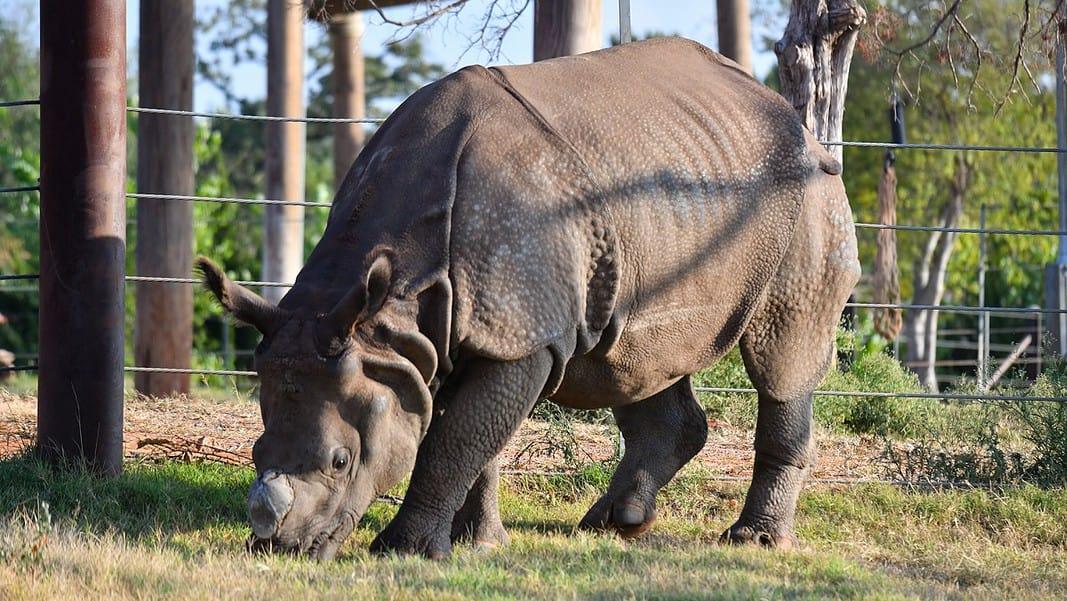
The Indian rhinoceros, also known as the one-horned rhinoceros, is found in the Indian subcontinent. These large herbivorous animals are known for their thick, armor-like skin and single horn.
- Region of habitat: Indian subcontinent
- Scientific name: Rhinoceros unicornis
- Feeding habits: Herbivores, feeding on grasses, fruits, and aquatic plants.
- What sound they make: Indian rhinoceroses make grunting and snorting sounds.
Fun fact
Indian rhinos are capable swimmers and often wallow in mud to regulate their body temperature and protect their skin from insects.
8. Indian Star Tortoise
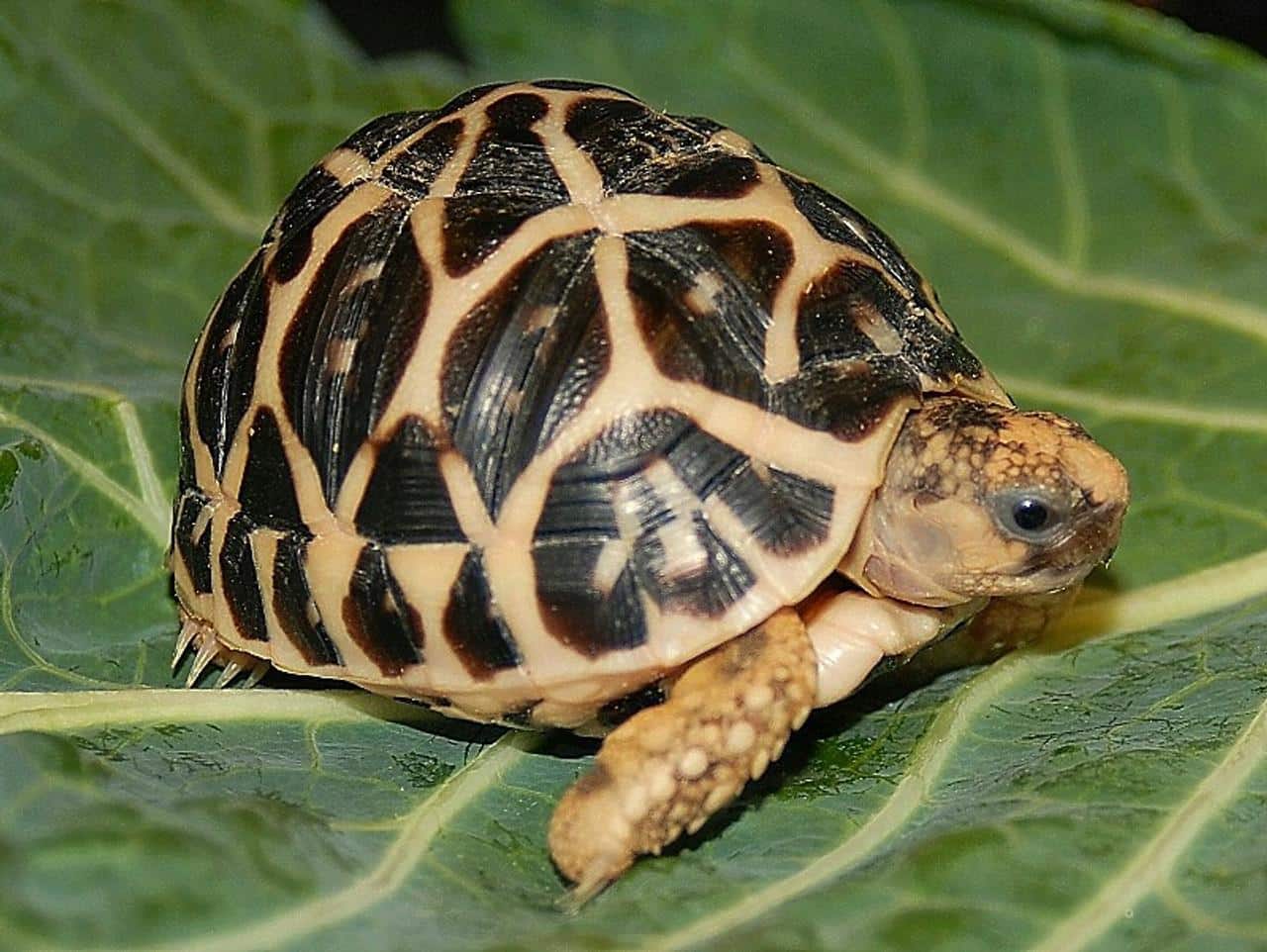
The Indian star tortoise is a medium-sized tortoise with a distinctive star-like pattern on its shell. It is found primarily in dry, scrubby areas of India and Sri Lanka.
- Region of habitat: India, Sri Lanka
- Scientific name: Geochelone elegans
- Feeding habits: Herbivores, feeding on grasses, leaves, and fruits.
- What sound they make: Indian star tortoises are silent creatures.
Fun fact
The star pattern on their shell is unique to each individual, much like human fingerprints.
9. Irish Setter

The Irish setter is a dog breed known for its long, shiny red coat and energetic personality. These dogs are commonly used for bird hunting and are friendly.
- Region of habitat: Originated in Ireland
- Scientific name: Canis lupus familiaris
- Feeding habits: Omnivores, typically fed commercial dog food, with a preference for meat.
- What sound they make: Irish setters bark, whine, and have an excited growl.
Fun fact
Irish setters are known for their speed and agility, making them excellent bird hunters and active companions.
10. Irish Terrier
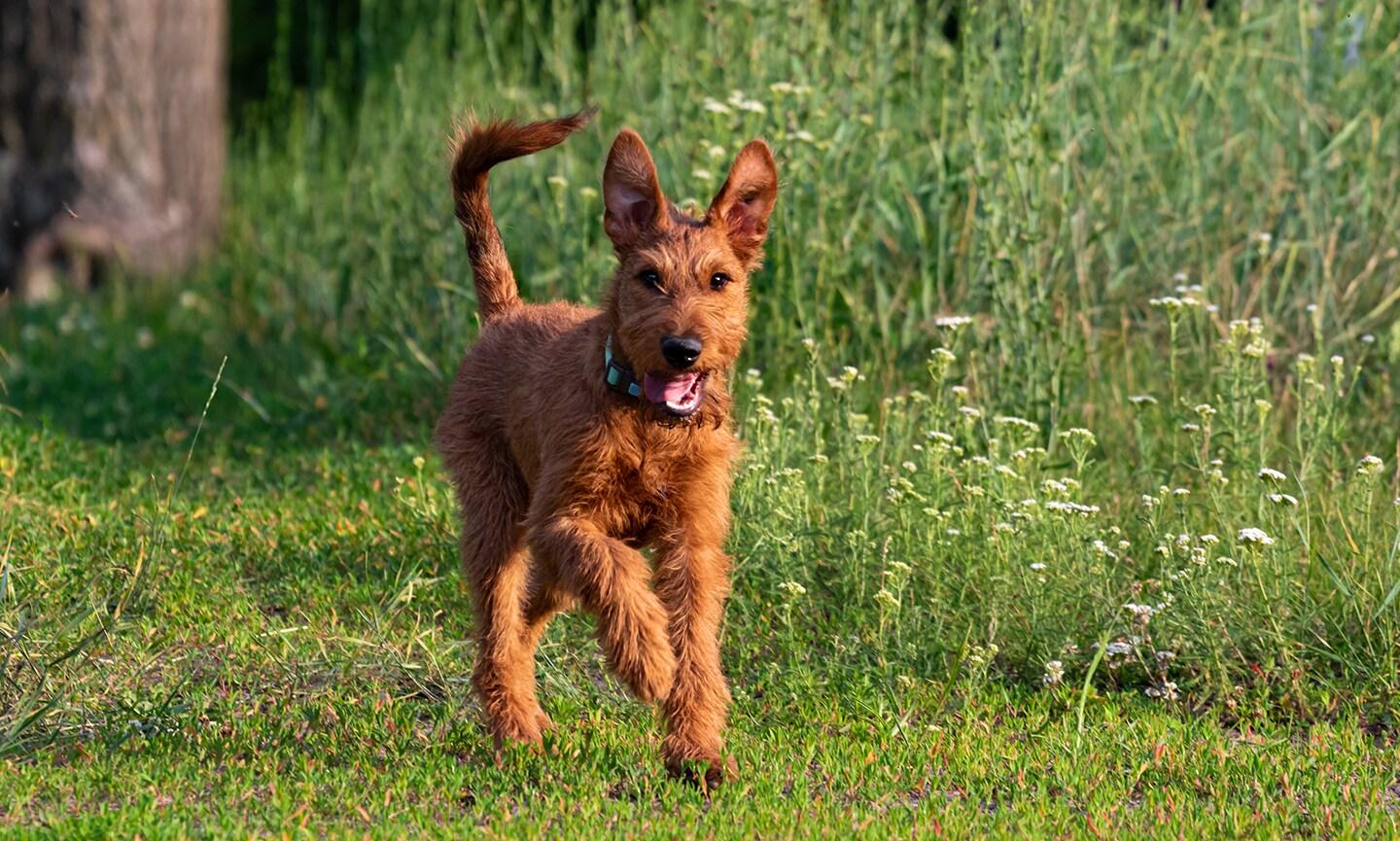
The Irish terrier is a small, sturdy dog breed known for its playful nature and distinctive red, wiry coat. These dogs are known for their intelligence and loyalty.
- Region of habitat: Ireland
- Scientific name: Canis lupus familiaris
- Feeding habits: Omnivores, typically fed a balanced diet of meat, vegetables, and dog food.
- What sound they make: Irish terriers bark loudly and have a yapping sound.
Fun fact
The Irish terrier is one of the oldest terrier breeds. It is often used for hunting and as a family companion.
11. Irish Wolfhound

The Irish Wolfhound is one of the largest dog breeds. It is known for its gentle temperament and history of hunting large game. These dogs are particularly loved for their calm and affectionate nature.
- Region of habitat: Ireland
- Scientific name: Canis lupus familiaris
- Feeding habits: Omnivores, requiring a diet rich in protein.
- What sound they make: Irish wolfhounds are generally quiet but can bark or howl when excited.
Fun fact
Irish wolfhounds were originally bred to hunt wolves and were so effective they nearly became extinct in the 19th century.
12. Ivory-Billed Woodpecker
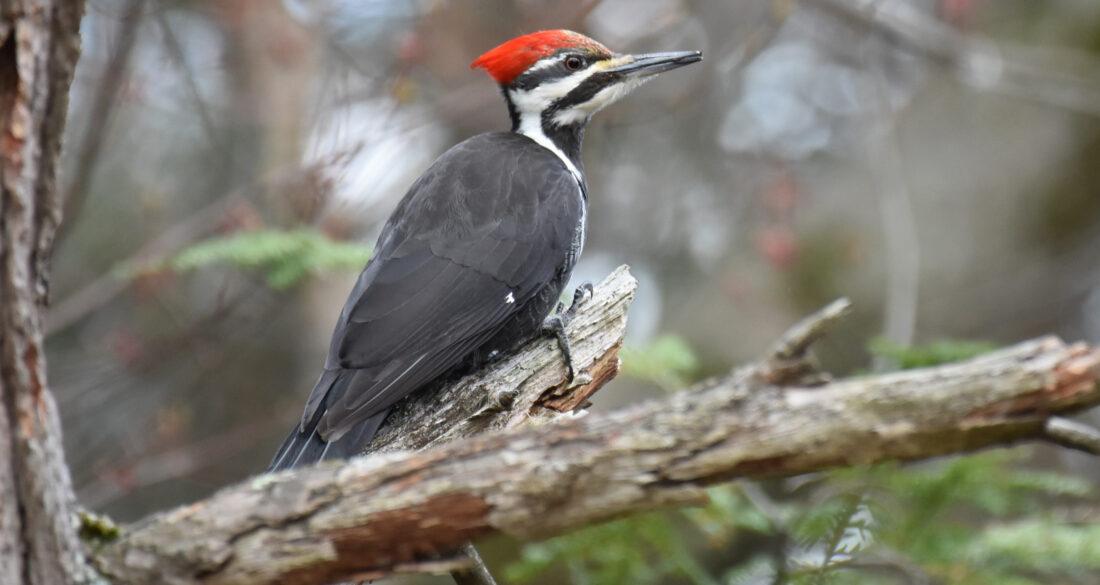
The ivory-billed woodpecker is one of the largest woodpeckers in North America. It is characterized by its striking black-and-white plumage and red crest.
- Region of habitat: Southeastern United States
- Scientific name: Campephilus principalis
- Feeding habits: Insects, especially beetles, found in trees.
- What sound they make: Ivory-billed woodpeckers produce a drumming sound to communicate.
Fun fact
This woodpecker was once thought to be extinct, but there have been unconfirmed sightings in recent years.
13. Ivory Gull
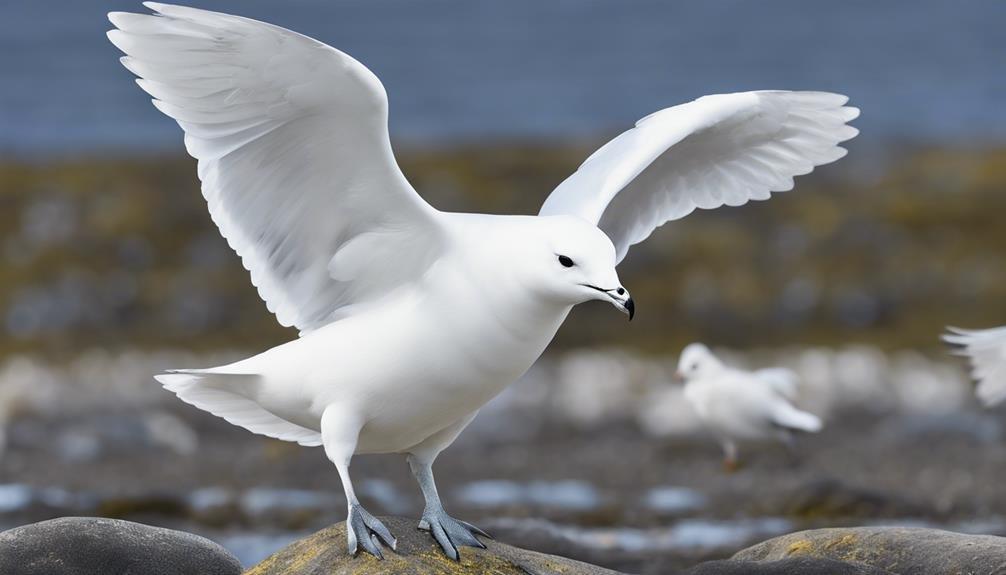
The ivory gull is a small, all-white bird found in arctic regions. Known for its pure white plumage, it is an indicator of the health of polar ecosystems.
- Region of habitat: Arctic regions
- Scientific name: Pagophila eburnea
- Feeding habits: Carnivorous, feeding on fish, carrion, and scavenged food.
- What sound they make: Ivory gulls make high-pitched calls and whistles.
Fun fact
The ivory gull is so closely associated with the Arctic that it is sometimes considered a symbol of the region.
14. Indian Leopard
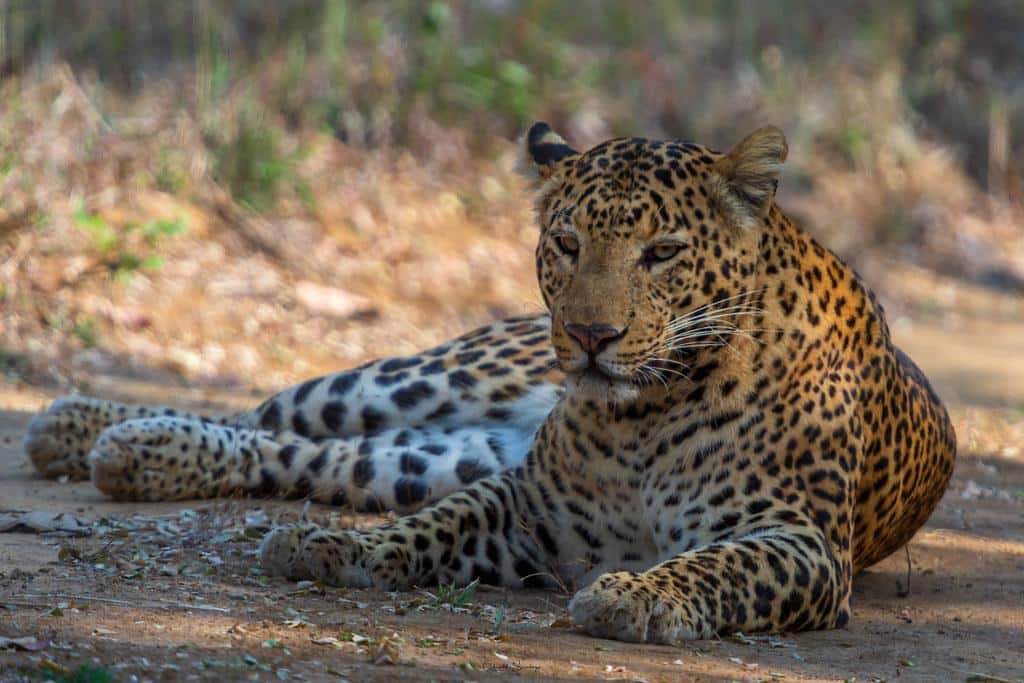
The indian leopard is a smaller subspecies of leopard found throughout the indian subcontinent. It is known for its stealth and ability to adapt to various habitats, from forests to grasslands.
- Region of habitat: Indian subcontinent
- Scientific name: Panthera pardus fusca
- Feeding habits: Carnivores, preying on deer, monkeys, and smaller mammals.
- What sound they make: Indian leopards growl and purr.
Fun fact
Indian leopards are nocturnal hunters and are often seen prowling in the evening and early morning.
15. Indian Peafowl
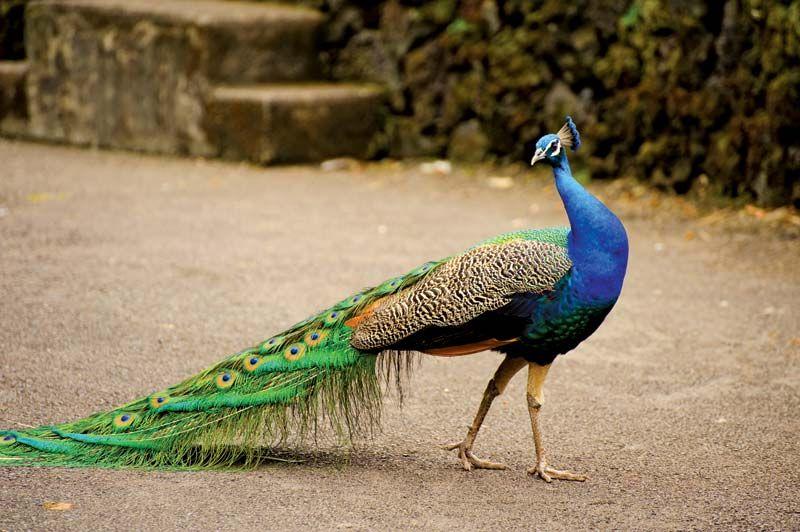
The Indian peafowl, also known as the Indian peacock, is famous for its colorful, iridescent tail feathers. These birds are native to the Indian subcontinent.
- Region of habitat: Indian subcontinent
- Scientific name: Pavo cristatus
- Feeding habits: Omnivores, feeding on seeds, fruits, insects, and small animals.
- What sound they make: Indian peafowls produce loud calls, which sound like “meow” or a “scream.”
Fun fact
Peacocks are famous for their elaborate courtship dance, where the male fans out his tail feathers to attract a mate.
16. Indian Roller
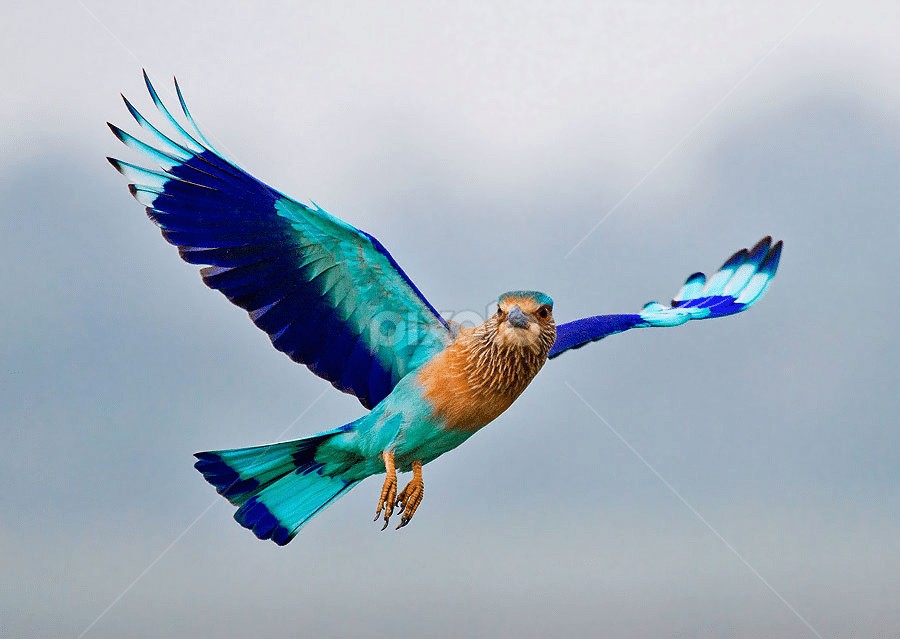
The indian roller is a brightly colored bird found in the indian subcontinent. It is known for its striking blue and brown plumage.
- Region of habitat: Indian subcontinent
- Scientific name: Coracias benghalensis
- Feeding habits: Carnivores, feeding on insects, small reptiles, and amphibians.
- What sound they make: Indian rollers make a variety of calls, including chattering and squawking sounds.
Fun fact
The Indian roller is the state bird of Telangana, India, and is known for its acrobatic flight displays.
17. Indian Vulture
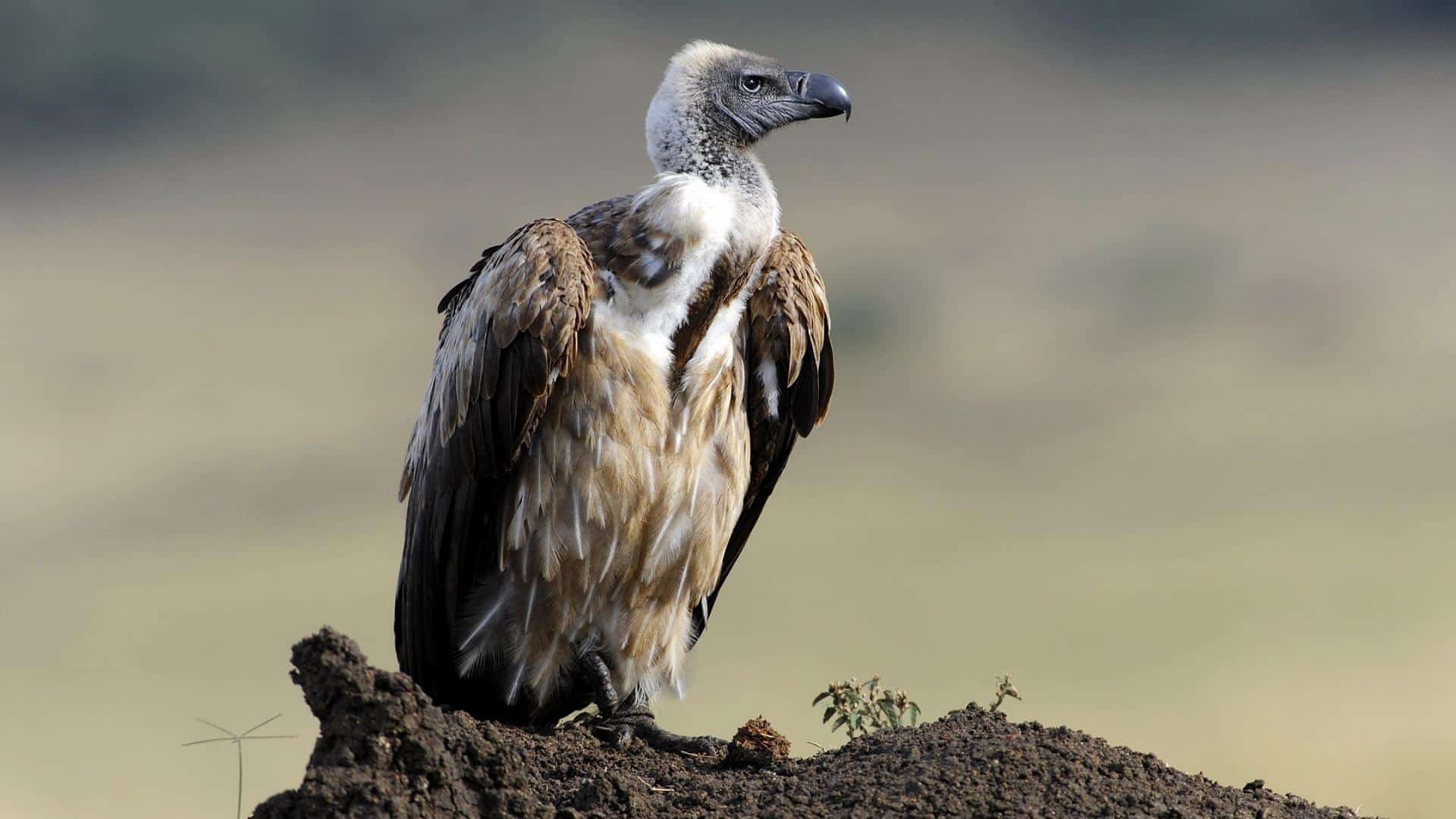
The indian vulture is a large scavenger bird found in India. It plays an important role in the ecosystem by consuming dead animals and preventing the spread of disease.
- Region of habitat: Indian subcontinent
- Scientific name: Gyps indicus
- Feeding habits: Scavengers, feeding on carcasses of dead animals.
- What sound they make: Indian vultures make rasping calls.
Fun fact
Indian vultures are critically endangered due to the widespread use of veterinary drugs that harm their population.
18. Indonesian Flying Fox
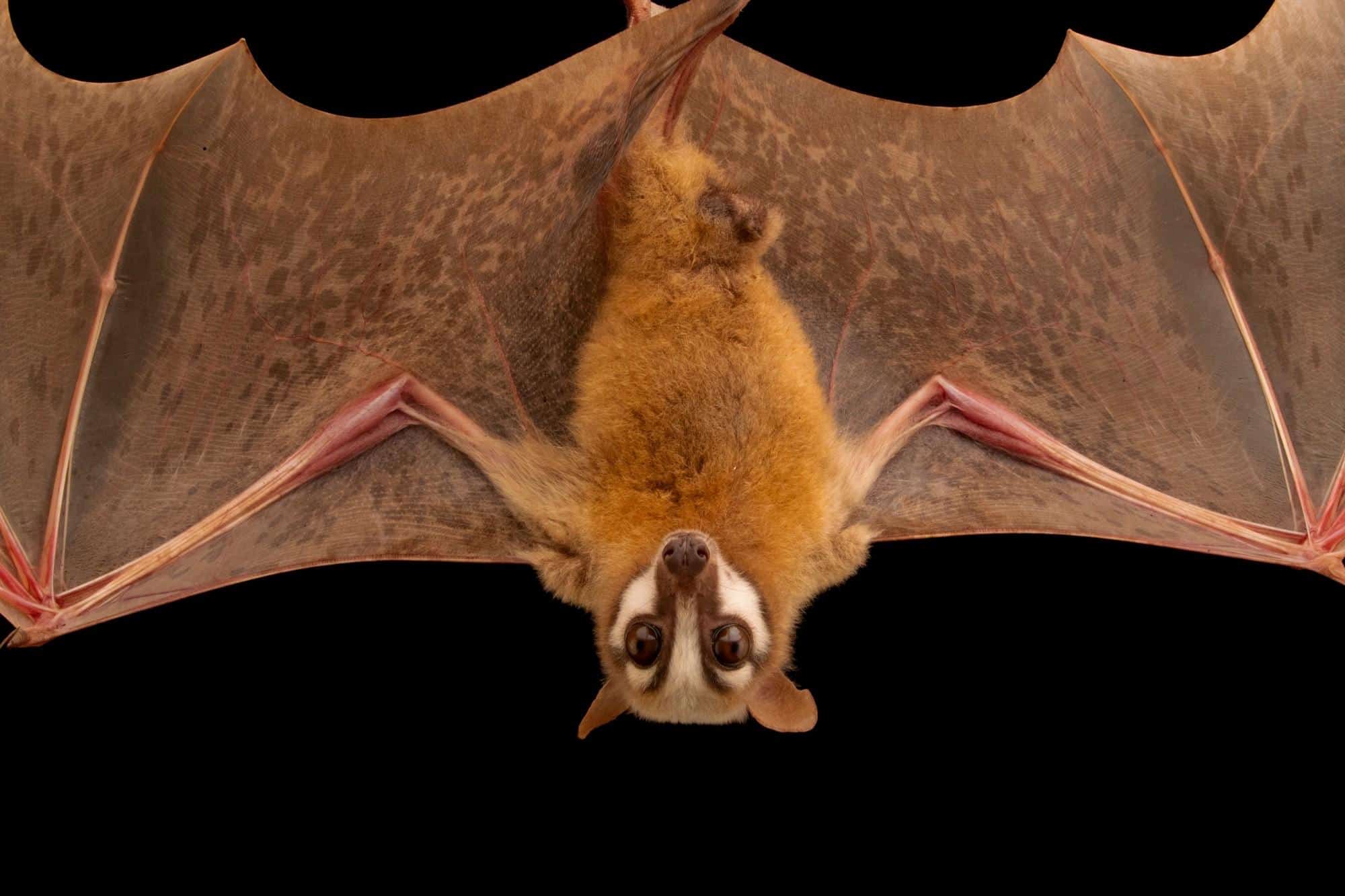
The Indonesian flying fox is a large fruit bat found in Southeast Asia. It is known for its large wingspan and role in pollinating flowers and dispersing seeds.
- Region of habitat: Southeast Asia, including Indonesia
- Scientific name: Pteropus vampyrus
- Feeding habits: Frugivores, feeding on fruits, nectar, and flowers.
- What sound they make: Indonesian flying foxes make screeching and chattering sounds.
Fun fact
The Indonesian flying fox is one of the largest bat species, with a wingspan of up to 1.5 meters.
19. Indri Lemur
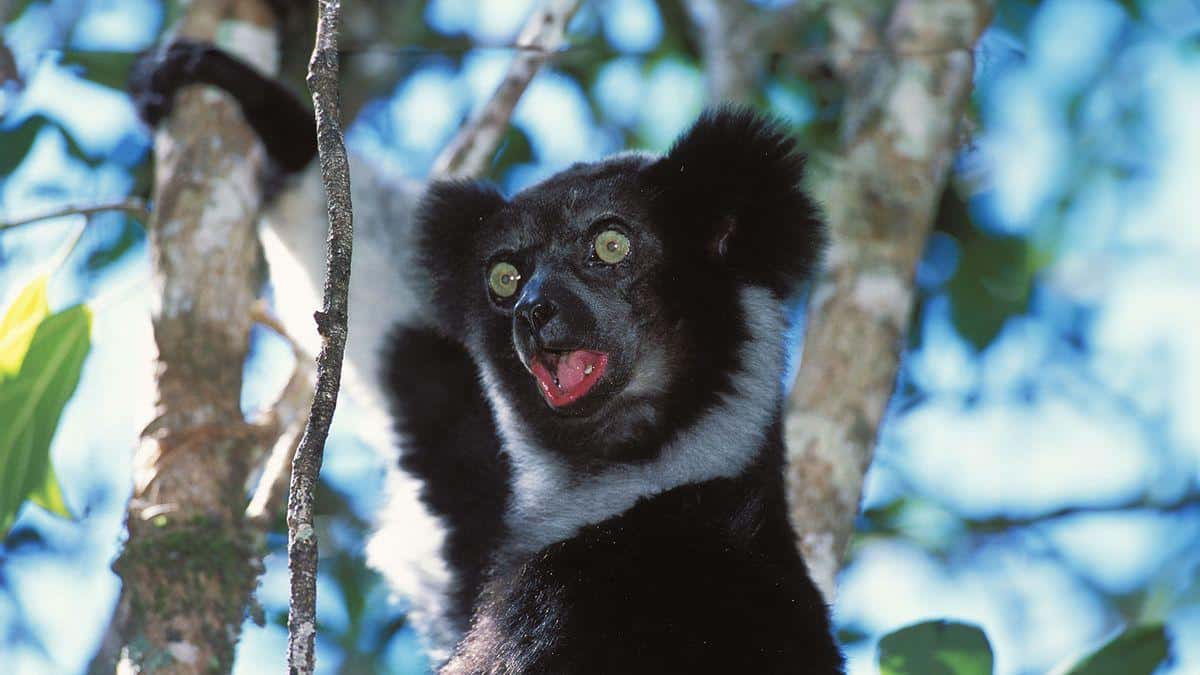
The indri lemur is one of the largest lemur species, known for its distinctive vocalizations and white and black fur. It is native to Madagascar.
- Region of habitat: Madagascar
- Scientific name: Indri indri
- Feeding habits: Herbivores, feeding on leaves, fruits, and flowers.
- What sound they make: Indris produce loud, wailing calls.
Fun fact
The indri lemur is critically endangered, with only a few hundred individuals remaining in the wild.
20. Island Fox
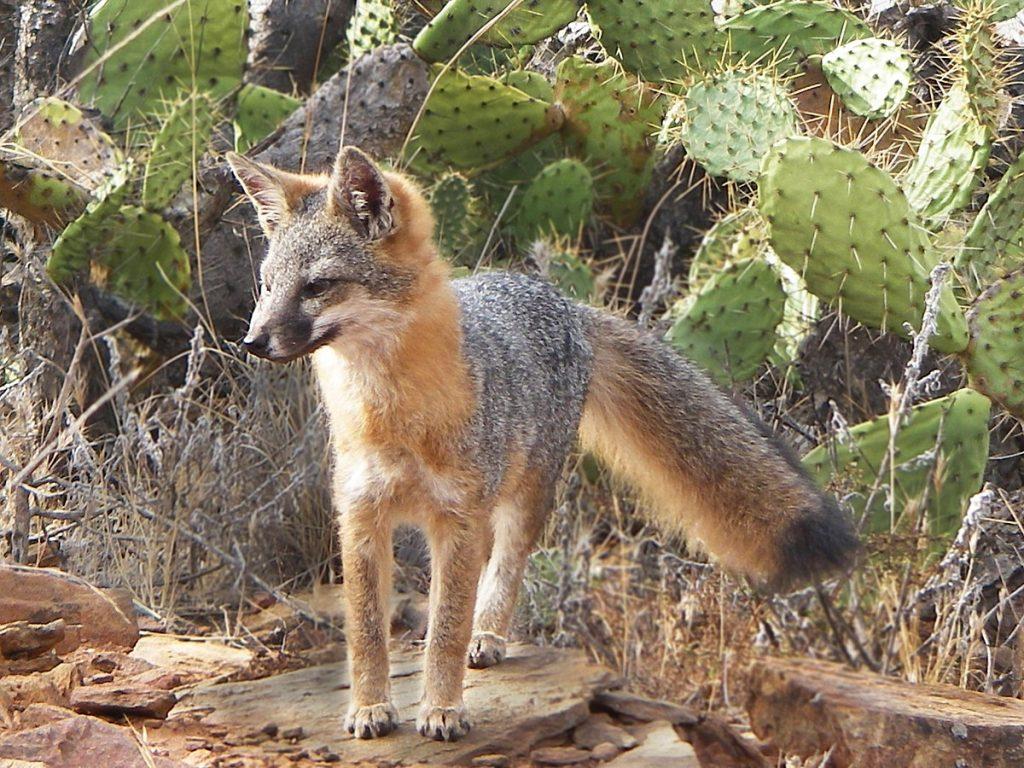
The island fox is a small, endangered fox species found on the Channel Islands of California. It is smaller than the mainland gray fox and has adapted to life on the islands.
- Region of habitat: Channel Islands, California
- Scientific name: Urocyon littoralis
- Feeding habits: Omnivores, feeding on plants, small animals, and insects.
- What sound they make: Island foxes produce soft barks and growls.
Fun fact
Island foxes have been isolated on their islands for thousands of years and have evolved into a distinct subspecies.
Some rare animals start with “I.”
21. Icelandic Sheepdog
22. Ichthyosaur
23. Ichthyostega
24. Ide Fish
25. Idmi Gazelle
26. Ili Pika
27. Immortal Jellyfish
28. Imperial Eagle
29. Inca Dove
30. Inca Tern
31. Inchworm
32. Indian Bullfrog
33. Indian Grey Mongoose
34. Indian Monitor Lizard
35. Indian Palm Squirrel
36. Indian Pangolin
37. Indian Pitta
38. Indian Skimmer
39. Indian Tapir
40. Indiana Bat
41. Indigo Bunting
42. Indigo Snake
43. Indo-Pacific Sailfish
44. Indochinese Leopard
45. Indonesian Flying Fox
46. Indri
47. Indri Lemur
48. Inland Taipan
49. Inquisitor Fish
50. Insular Flying Fox
51. Insulin Fish
52. Intelligent Whale
53. Intestinal Fluke
54. Inyo Mountain Salamander
55. Iolo Bug
56. Iphiclus Beetle
57. Iridescent Shark
58. Irish Setter
59. Irish Terrier
60. Irish Water Spaniel
61. Irish Wolfhound
62. Iron Butterfly
63. Iron Crab
64. Irrawaddy Dolphin
65. Irukandji Jellyfish
66. Irukandji Sea Wasp
67. Irukandji Spider
68. Isabelline Bear
69. Island Marble Butterfly
70. Island Scrub Jay
71. Isle Royale Wolf
72. Isosceles Butterfly
73. Isopod
74. Isopogon Moth
75. Istiophoridae Fish
76. Italian Greyhound
77. Italian Honeybee
78. Italian Sparrow
79. Ithaca Ant
80. Ituri Forest Chameleon
81. Ivory Billed Aracari
82. Ivory Gull
83. Ivory King Pigeon
84. Ivory Weasel
85. Ivory-billed Woodpecker
86. Ivoryfish
87. Ixian Parrot
88. Ixodes Tick
89. Izu Thrush
90. Izumo Salamander
91. Izzy Bird
The Bottom Line
From mountain peaks to ocean depths, our exploration of animals beginning with “I” reveals nature’s incredible diversity.
Across continents, uncover the Ibex’s cliff-climbing prowess, the sacred Ibis of ancient Egypt, and the acrobatic Impala capable of 3-meter leaps.
Encountered the endangered Indri Lemur’s haunting calls in Madagascar and the Indonesian Flying Fox’s impressive 1.5-meter wingspan.
These animals showcase remarkable adaptations to their environments, from the Indian Rhinoceros’s swimming abilities to the Island Fox’s evolutionary isolation.
If you’re interested in more informative animal and wildlife content, feel free to click here and explore other blogs that you might enjoy!

